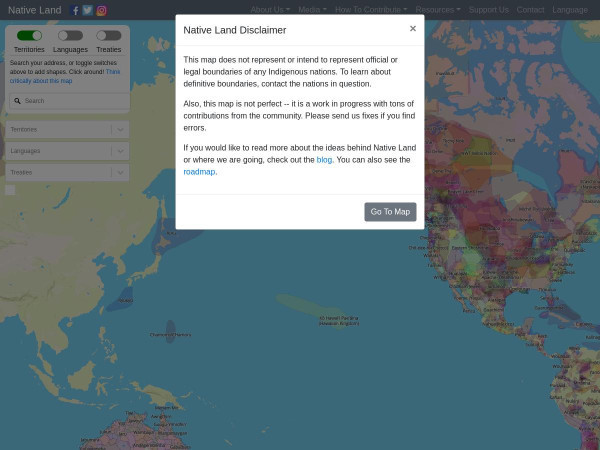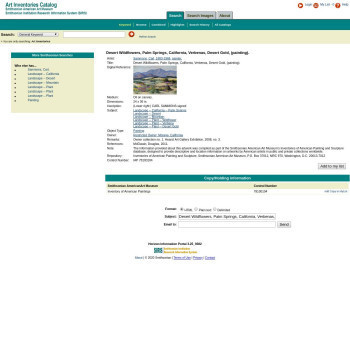ufn44 uln44
Learning Lab Coordinator
Smithsonian Institution
Middle School (13 to 15 years old), High School (16 to 18 years old)
Teacher/Educator
Language Arts And English, Civics, Literature, Cultures, Economics, Social Studies, Geography, Writing, US History, Arts, Other
:
I'm a history-lover, art fan, and bookworm. I taught high school history (U.S. History and World Religions) for ten years in North Carolina, teach currently in Pittsburgh, PA, and am working to help teachers make the most of this new resource!
ufn44 uln44's collections
Identifying Characteristics of Renaissance Art
This collection will teach you about how Renaissance artists changed the style and focus of art in the period between 1300 and 1600 CE. When you are done, you should be able to thoroughly answer the question: How did the art of the Renaissance reflect the new emphasis on humanism and science?
First, review the painting, Raphael's School of Athens, and learn about the new techniques used.
Then study the additional works in the collection and try to use them as examples of the different techniques. Some of the works are from the Renaissance period and others are more modern interpretations. A worksheet is included at the end of this collection to record your work.
Finally, test your knowledge with a quick quiz. Use your worksheet to help!
 ufn44 uln44
ufn44 uln44
11
Vikings--Myths and Mysteries
<p>The Vikings have inspired many artists, writers, and filmmakers with their bravery and unique way of life. However, many misconceptions have developed and many facts are still unknown. In this collection, students will explore the website for the Vikings exhibit while taking notes on the included worksheet. Then, they'll evaluate three works of art (and a team logo) based on the Vikings to gauge how accurately they represent Viking life. Finally, they will be asked to create their own 2-D or 3-D object representing Viking life.</p><p>Tags: Norse, inquiry, Viking, Norway, Greenland, Iceland</p>
 ufn44 uln44
ufn44 uln44
7
Rebels and Beats
<p>This topical collection is based on a past exhibit in the National Portrait Gallery entitled <a href="http://www.npg.si.edu/exh/rebels/index2.htm" target="_blank">Rebels and Beats: Painters and Poets of the 1950s</a>. This collection might be used by teachers or students who want to explore the counterculture of the 1950s, a time period typically associated with conformity. The collection includes paintings, photographs, and videos related to the writers and artists involved in the Beat Generation, San Francisco Renaissance, Black Mountain College, and New York School scenes. </p><p>In what ways did these artists challenge the social norms of the time? Why is art often a means of challenging the status quo?</p><p>tags: Ginsberg, Kerouac, Ferlinghetti, de Kooning, Baraka, poem, counterculture, Beat Movement</p>
 ufn44 uln44
ufn44 uln44
44
Thanksgiving--A Reflection of a Nation
A learning resource for students about Thanksgiving. The images in this collection are different portrayals of the United States holiday of Thanksgiving. They are grouped in order of publication from 1863 to 1994. As you look through them and complete the activities, think about these three key questions:<br />
-How does the context in which the image is produced affect the result? Meaning, how does what is happening during the time period affect what kind of picture of Thanksgiving we see?<br />
-What do the images say about our national identity: who is a welcome part of the United States? What do we celebrate in this country?<br />
-Whose version of the Thanksgiving story is being told in these images?
 ufn44 uln44
ufn44 uln44
15
Native American Policy Overview
<p>During the late 19th century, reformers in the United States like Helen Hunt Jackson pushed for a change in attitude towards Native Americans. Rather than simply viewing them as enemies from whom land could be gained, these reformers promoted the concept of assimilation, or helping Native Americans adopt the characteristics of white culture that would allow them to be successful in American society. One of the ways they did this was through the use of Christian boarding schools for Native American children. Federal laws, like the Dawes Act of 1887, also supported this goal. </p>
<p>As you investigate the artifacts, images, and readings in this collection, consider whether you think assimilation was a beneficial policy for Native Americans. How did Native American families respond to assimilation?</p>
<p>Tags: point of view, assimilation, assimilate, American Indians, Carlisle, Jim Thorpe, allotment</p>
 ufn44 uln44
ufn44 uln44
14
Poster and Music Analysis: Joe Hill and the IWW
<p>This collection includes an iconic labor union poster and is intended as a warm-up activity for a lesson on labor unions in the late 19th and early 20th century. Discussion questions and songs by and about Joe Hill are included. </p>
<p>Guiding questions to consider:<br />-What conditions led to the development of labor unions?<br />-How did the philosophy of the IWW, or Wobblies, differ from other labor unions?<br />-Why has Hill remained an iconic figure for the labor movement?</p><p>#SmithsonianMusic<br /></p>
 ufn44 uln44
ufn44 uln44
3
Six Degrees of Separation Example: Lincoln's Axe to William Jennings Bryan
<p>This is a finished version of the "Six Degrees of Separation" AP USH review activity, including annotations explaining the links between objects. This may be useful to share with students the first time you try the activity. Note that connections should be deeper than similarities or coincidental links; they should reflect a causal relationship. In addition, you might ask students to present some analysis of the resources they chose, identifying key details.</p>
<p>The original activity is available here: <a href="https://learninglab.si.edu/collections/six-degrees-of-separation-an-apush-review-activity/C1stNx2FioYNAkWP#r" target="_blank">https://learninglab.si.edu/collections/six-degrees-of-separation-an-apush-review-activity/C1stNx2FioYNAkWP#r</a><br /></p><p><em>#historicalthinking</em></p><p><br /></p>
 ufn44 uln44
ufn44 uln44
6
Sacco and Vanzetti
<p>Students may use this collection to explore the reasons why Sacco and Vanzetti became a celebrated cause among liberal activists in the 1920s, and how their trial exemplified cultural divisions that emerged during the decade. Examining artists' perspectives on the trial through visual arts and music will help provide insight into the era. </p>
<p>Tags: 1920s, Twenties, immigration, nativism, anarchy, socialism, Red Scare, crime, justice, inquiry, continuity and change</p><p><em>#historicalthinking</em></p><p><br /></p>
 ufn44 uln44
ufn44 uln44
11
Who provoked the Korean War?
"On June 25, 1990, the North Korean Army launches it surprise assault on the South." But what led up to this moment? This activity asks students to read primary source documents and interpret historical events surrounding the Korean conflict. Students will look for motives and evidence in a variety of accounts and determine who was responsible for starting the Korean War. <br />
<br />
There are resources with quiz questions that students can answer directly, or teachers may prefer to print documents and resources for in-class use. It is recommended that teachers preview the materials in this teaching collection as there are a variety of ways to structure the lesson.<br />
<br />
Essential questions include:<br />
-How would you describe the relationship between Kim Il Sung and Joseph Stalin?<br />
-Was North Korea, a smaller country, pulling a superpower into a conflict?<br />
-Was the Soviet Union using North Korea to further its goals?<br />
-Why did the United States choose to respond via the United Nations forces instead of unilaterally? How did this decision impact the conflict?<br />
-How does this incident reflect larger themes and issues of the Cold War, especially the role of the United Nations, over-arching foreign policy strategy, and nuclear fears?<br />
<br />
Tags: Wilson Center, Cold War, Korea, China, Truman, Eisenhower, Macarthur, Soviet Union, USSR, Communism
 ufn44 uln44
ufn44 uln44
17
Carlisle Indian Industrial School
<p>Perhaps the most famous of the Indian boarding schools created in the late 19th century, the Carlisle Indian Industrial School in Pennsylvania was founded by Captain Richard Henry Pratt (with funding and support from the United States government), with the purpose of assimilating (or Americanizing) Indian students. </p><p>Student will use archival materials to explore student life at Carlisle Indian School and to evaluate assimilation policy as practiced through the school. <strong>What was gained and lost through the process of assimilation? </strong></p><p>Using these resources as a starting point, users should research one former Indian student or one aspect of student life using the <a href="http://carlisleindian.dickinson.edu/" target="_blank">Carlisle Indian School Digital Resource Center</a>. Many student files record not only experiences that occurred while at the school, but information about occupations and life after the boarding school experience. Were students and families able to shape positive experiences despite the intended consequences of boarding school policy? </p><p><span>Students should create a writing or artwork that reflects information learned about that particular student or activity and that shares the learner's opinions on assimilation policy and the response of Native Ameri</span><span>cans</span><span>. </span><strong>How should the Carlisle Indian School be remembered? </strong></p><p>Tags: Native American, Indian, boarding school, assimilation, Pratt, Dawes Act, Jim Thorpe, allotment</p>
 ufn44 uln44
ufn44 uln44
32
The 1960s--A Decade Collection
<p>This is a topical collection about American life and politics in the 1960s. Resources in this collection might be helpful to students and teachers working on projects about the decade. It is not meant to be completely comprehensive, but rather includes highlights of the Smithsonian's collection spanning art, popular culture, social trends, leadership, and technology.</p><p>Teachers and students might copy and adapt this collection to suit their needs; highlighting a specific aspect of life in the 1960s and adding annotations and additional resources.</p><p>tags: Sixties, Kennedy, Camelot, civil rights, Vietnam, politics, decade</p>
 ufn44 uln44
ufn44 uln44
97
The Irish Experience in Pittsburgh
<p>Created for the AIU3 workshop on 3/17/17, this topical collection includes images from Historic Pittsburgh (<a href="http://digital.library.pitt.edu/images/pittsburgh/">http://digital.library.pitt.edu/images/pittsburgh/</a>), the Smithsonian Collection, the records of the Ancient Order of Hibernians in the Detre Library and Archives, Heinz History Center, and additional web resources. This large group of documents is intended to be shaped and whittled into useful collections for individual classrooms. Teachers might consider linking the documents to themes like:</p><p>•Immigration</p><p style="margin-left:32px;">•Push and Pull factors</p><p style="margin-left:32px;">•Growth of social networks</p><p style="margin-left:32px;">•Assimilation</p><p style="margin-left:32px;">•Nativism</p><p style="margin-left:32px;">•Contributions (Political, Cultural, Military, Philanthropy)</p><p>•Industry in Western PA</p><p>•Labor Movement</p><p><br /></p><p>To make this collection your own, copy it and then use the edit feature to add and remove documents as well as contribute any annotations that might help your students. </p>
 ufn44 uln44
ufn44 uln44
29















